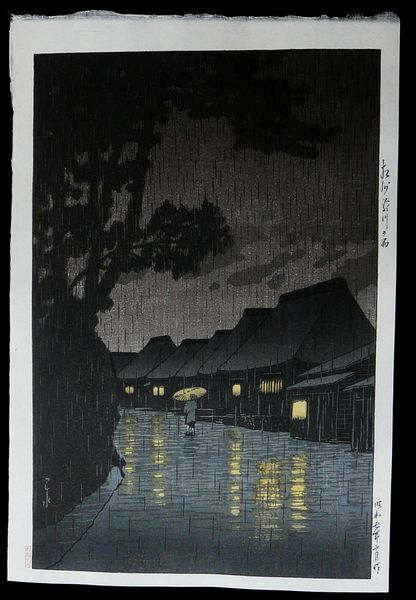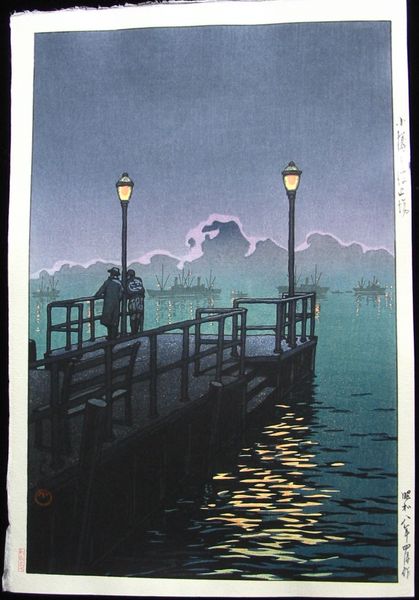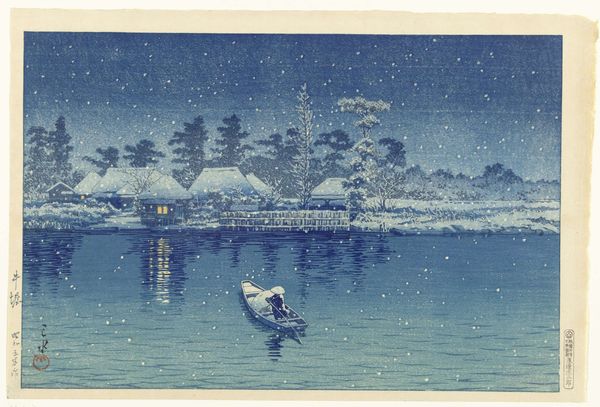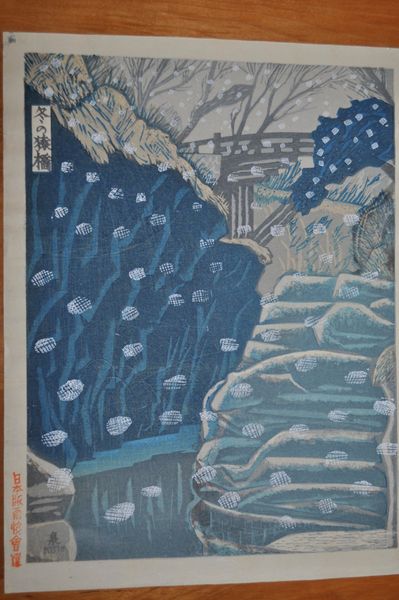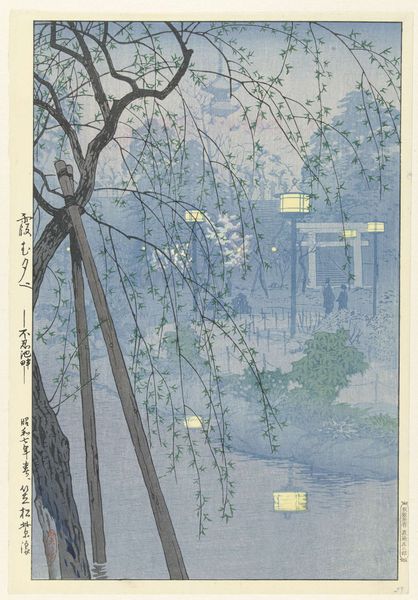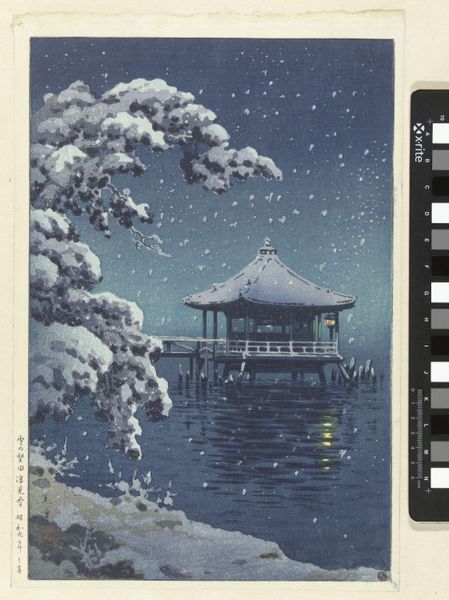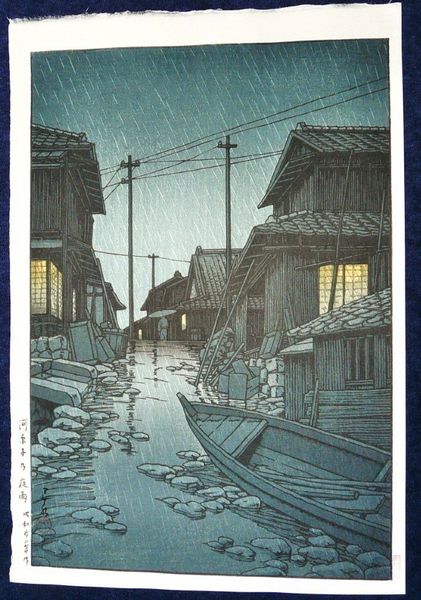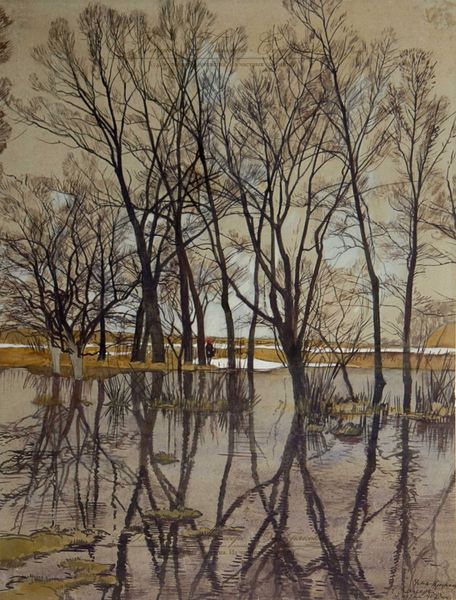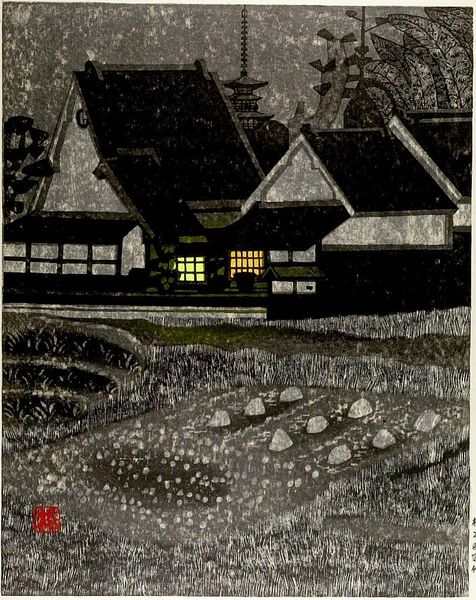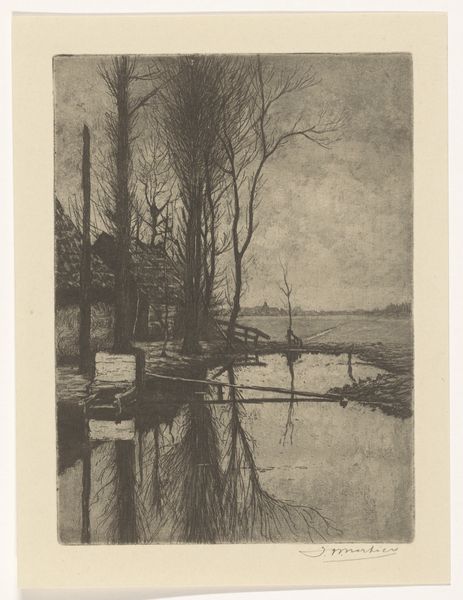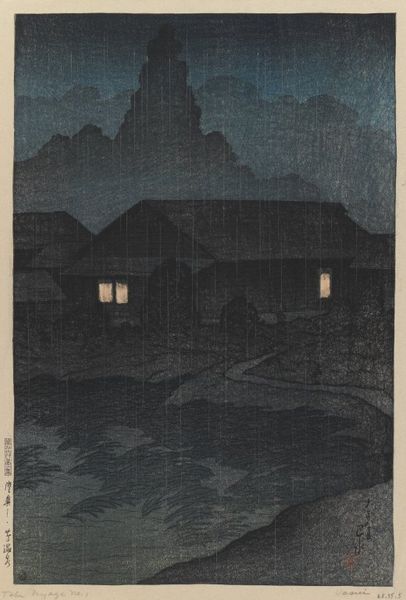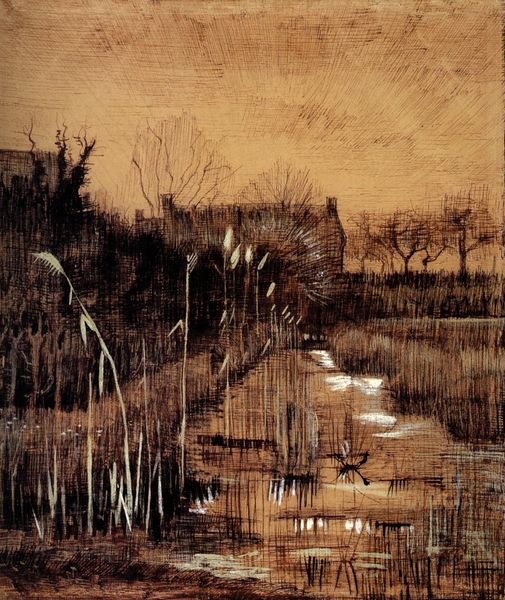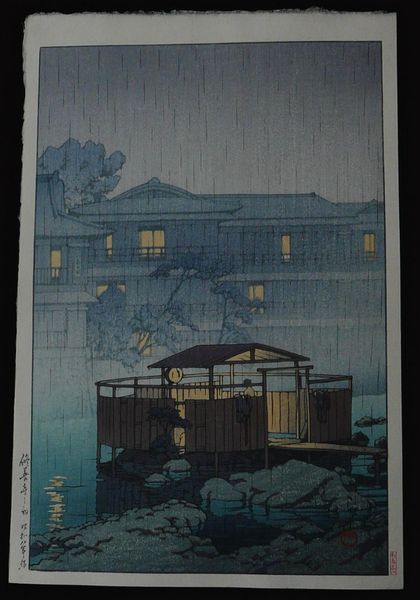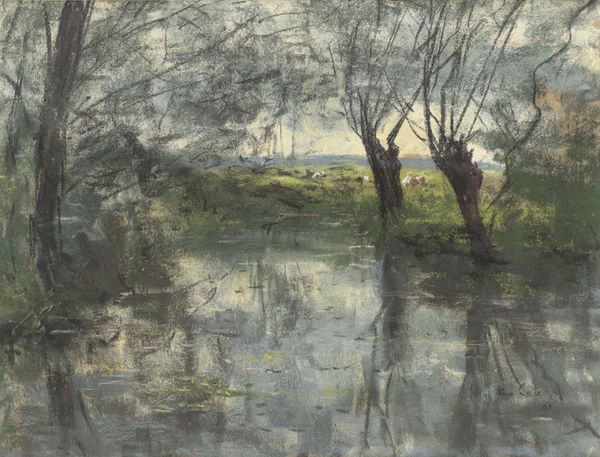
Dimensions: height 391 mm, width 261 mm
Copyright: Rijks Museum: Open Domain
Curator: Standing before us is Kasamatsu Shirō's 1938 woodblock print, "Evening Rain at Shinobazu Pond," now residing here at the Rijksmuseum. Editor: It’s just...utterly melancholic. The rain seems to wash away all the colour, reducing everything to these soft, muted shades of blue and grey. You can almost feel the dampness seeping into the air. Curator: The piece captures a fleeting moment, a visual echo deeply rooted in the legacy of Ukiyo-e. Observe how the traditional aesthetic sensibilities combine with a more contemporary, almost impressionistic feel. Editor: I’m particularly struck by the figure under the umbrella. Isolated, almost ghostlike, proceeding into the downpour. This representation carries significant historical implications: the rise of urban isolation and anonymity in pre-war Japan, mirroring some of the broader social fragmentations occurring globally. Curator: Absolutely, and let’s note how the presence of these street lamps introduce another element of modernity while simultaneously referencing back to traditional Japanese lanterns and the cultural association of light as guidance in darkness. This kind of visual analogy transcends time, touching something universally felt. Editor: That contrast also emphasizes the disparity between tradition and rapid modernization, with nature and human development coexisting in the frame yet remaining starkly detached from one another. Even the Shinobazu Pond carries a history marked by urbanization— originally a lotus pond, it has transformed multiple times. Curator: These visual components are integral. This transformation encapsulates a shared emotional experience: finding peace within inevitable changes. It makes one contemplate impermanence itself, not as sadness but as something quietly beautiful, reflecting the cycles that define our existence. Editor: Yes, this image urges a kind of emotional-historical consciousness, not passively looking at nature, but realizing the depth of humanity's interaction and impact. Ultimately, it highlights how environmental circumstances shape individuals' subjective feelings as much as political events do. Curator: Indeed, thank you for sharing those insightful perspectives. Considering these layers enhances the viewing experience immeasurably. Editor: My pleasure. Considering artworks from broader perspectives hopefully enriches the conversation for every visitor.
Comments
No comments
Be the first to comment and join the conversation on the ultimate creative platform.
